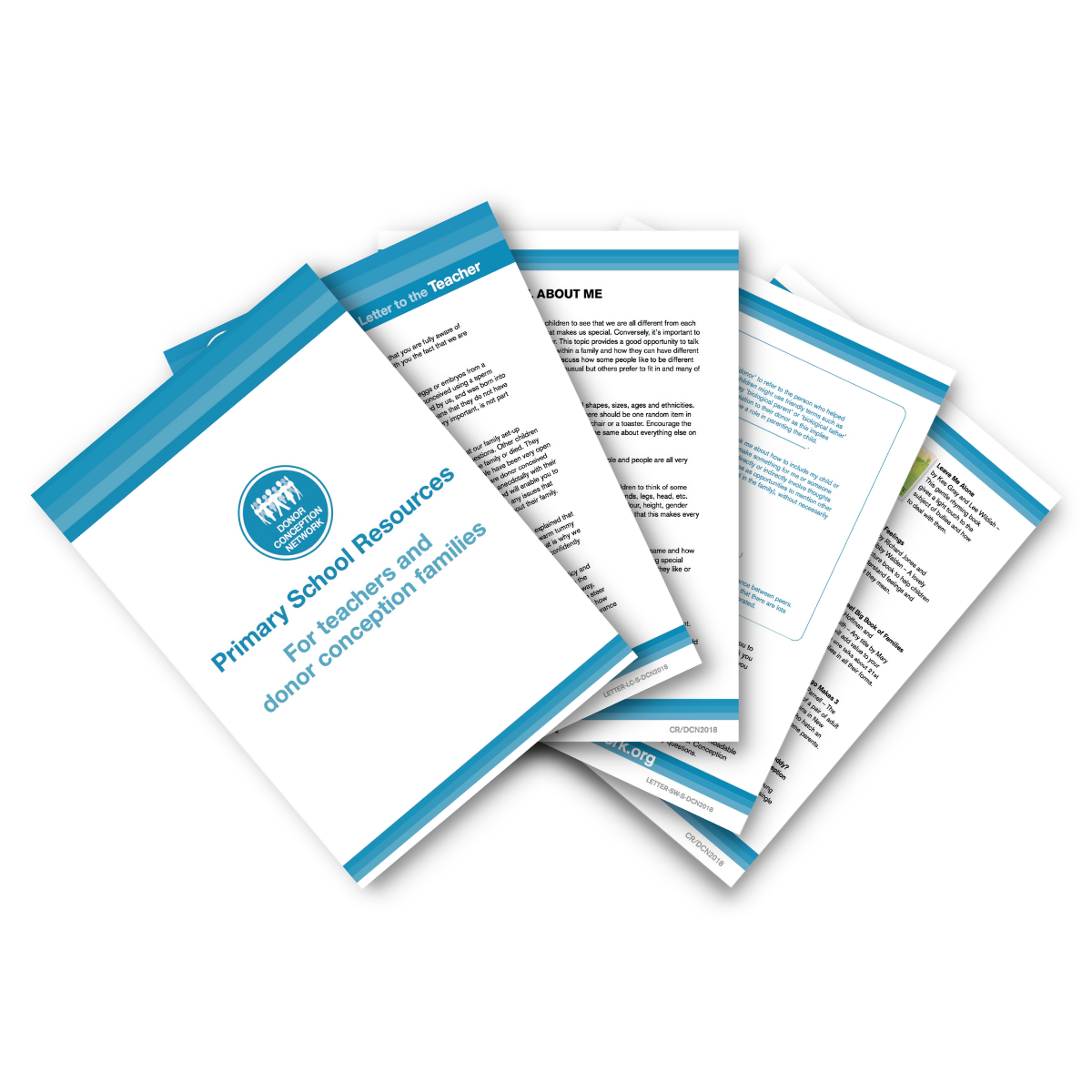The pack was designed around the UK school curriculum but has many overlaps with any country’s primary education system. It contains 5 main documents.
Information for parents – Why tell?
This is a document exploring reasons to tell the school/nursery about the fact that your child is donor conceived or reasons why you might not want to.
Letter to the teacher
NOTE: we will email you to find out which version you want
We have a range of letters that are customised depending on your family situation (solo mum, two mums, two dads, mum and dad) and the donation used (plus surrogacy where relevant). They follow the same basic structure and share most of the content. They are designed to be either:
Used as a resource to think about how you might approach the school
Given straight to the teacher
Used as a guide for topics you might want to mention to a teacher but to be raised verbally rather than using a letter
Used as a template to write your own personal letter
The letters are guidelines and suggestions and are definitely not meant to be prescriptive. You can use them to create your own letter using a language and tone that you feel comfortable with.
In the letter, by ‘immediate family’ we are referring to just parents and children
The mention of the lack of genetic link gives an opportunity to add that this is why a child may not look particularly like you, if you wish
If you have used a donor or surrogate who is known to you the document doesn’t explain that. During a conversation you can add the details of who they are, or simply that they are known to you, if you wish
Information for teachers
This gives primary school teachers some background with regard to what donor conception is and isn’t. It clarifies how the topic might come up in the playground or classroom and why it might be important for them to be aware of this.
Classroom resources – for teachers
This document offers suggestions on how donor conception might be integrated into the curriculum under topics such as Families and All About Me or within discussions on difference, inclusion, emotions or friendship (for example). The resource also includes a bibliography of wonderful books on difference and families for the school library or for use in the class where appropriate. Parents might also like to look at the list for ideas for good titles to have at home too.
Questions from friends
To complete the set of resources we also created some simple child-friendly sample dialogues that children could use in the playground if other children comment or ask questions. The conversations include suggestions for how to simply bat a question away as well as possible ways to answer if they choose to.
As with the ‘Letter to the teacher’, these examples are designed to be conversation starters at home and are not prescriptive. Children and parents can look at them together and work out what the child might be comfortable with saying, or come up with other ideas. The intention is to support conversations at home and empower children to be confident in telling their story if they wish to do so.
